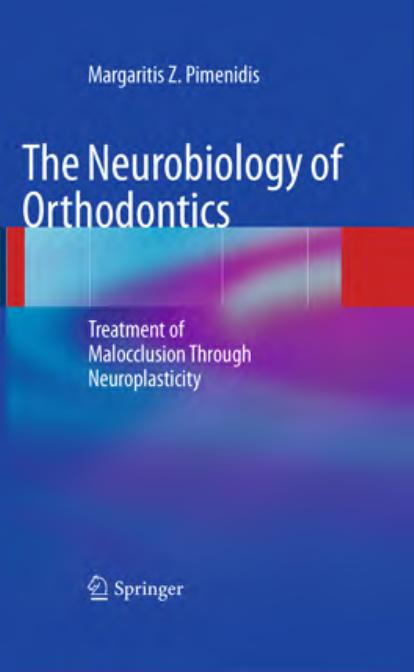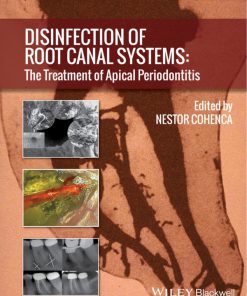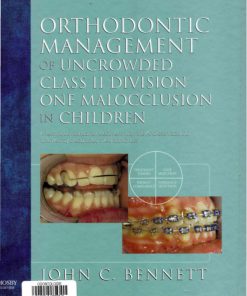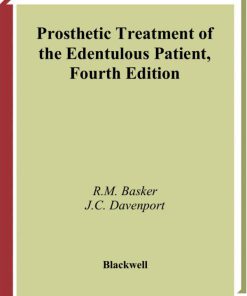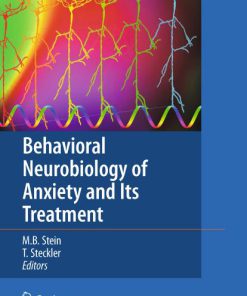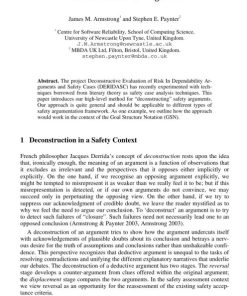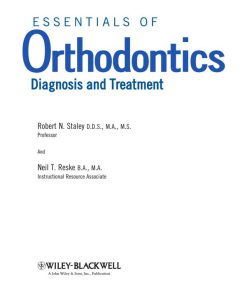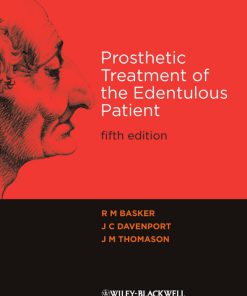The Neurobiology of Orthodontics Treatment of Malocclusion Through Neuroplasticity 2009th Edition by Margaritis Pimenidis ISBN 3642434789 9783642434785
$50.00 Original price was: $50.00.$25.00Current price is: $25.00.
Authors:Springer; 1st edition (September 29, 2009) , Author sort:edition, Springer; 1st
The Neurobiology of Orthodontics Treatment of Malocclusion Through Neuroplasticity 2009th Edition by Margaritis Pimenidis – Ebook PDF Instant Download/Delivery. 3642434789, 9783642434785
Full download The Neurobiology of Orthodontics Treatment of Malocclusion Through Neuroplasticity 2009th Edition after payment
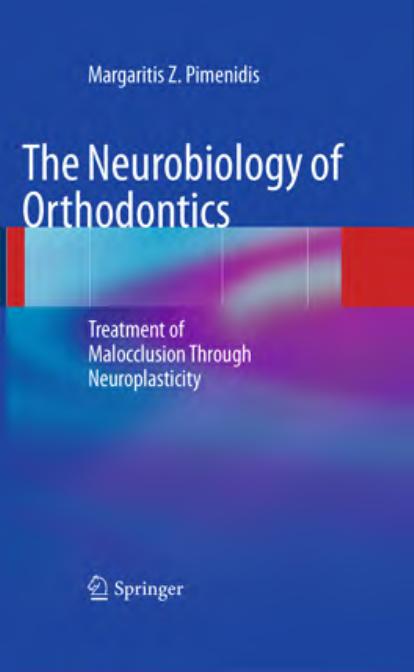
Product details:
ISBN 10: 3642434789
ISBN 13: 9783642434785
Author: Margaritis Pimenidis
This book presents the neurobiology of orthodontics according to the most recently acquired knowledge on the interaction of the brain activity with the senses. In particular, it highlights the ability of orofacial sensory input to modulate and change the brain activity underlying functions of the stomatognathic system, such as chewing, biting, speech, and occlusal feedback. The approach adopted thereby represents a significant departure from traditional orthodontics, in which malocclusions of the teeth have been interpreted as deriving from DNA coding errors. The described new conceptualization of the etiology and diagnosis of malocclusions has profound implications for orthodontic therapy, as is clearly explained. Orthodontic therapy in turn has significant effects on the brain, which are documented in a chapter devoted to neuroimaging methods. By opening up new and creative pathways in the world of orthodontics, this book will hopefully both educate and excite the practitioner. It is recommended reading for all orthodontists.
The Neurobiology of Orthodontics Treatment of Malocclusion Through Neuroplasticity 2009th Table of contents:
1.1 Introduction
1.2 Oral Experience Strengthens Neuron Synapses
1.3 How Experience Strengthens Synapses
1.4 Developmental Agents of the Brain
1.5 Families of Developmental Agents of the Brain
1.6 Trophic Functions of Neurons – Plasticity
1.7 Oral-Cavity – Reservoir of Growth Factors
1.8 The Ever-Growing Brain
Functional and Dysfunctional Aspects of the Cerebral Cortex
2.1 Introduction
2.2 The Sensorimotor Cortex
2.3 Oral Sensorimotor Integration
2.4 Sensory Integration Dysfunction
2.4.1 Dysfunction in the Proprioceptive System
2.4.2 Dysfunction in the Tactile System
2.4.3 Dysfunction in the Vestibular System
2.4.4 Possible Sensory Signs and Symptoms
2.5 Oral Experience Changes the Brain
2.6 Role of Reticular Formation in Oral Sensorimotor Functions
2.6.1 Descending Reticular Control
2.6.2 Ascending Reticular Activating System
2.6.3 Corticoreticular Control
2.6.4 Centrifugal Afferent Control and Central Inhibitory Mechanisms
Sensory Deprivation of the Brain
3.1 Introduction
3.2 Sensory Deprivation and Thumb-Sucking
3.3 Sensory Deprivation and Malocclusions of the Teeth
3.4 Sensory Deprivation and Occlusal Interferences
3.5 Sensory Deprivation and Emotions in the Deciduous and Mixed Dentition
3.6 Looking into Love and Depression: The Deep Limbic System
3.7 Sensory Adaptation
Looking into the “Black Box”
4.1 Introduction
4.2 Decoding the Brain Changes
4.3 Looking into Conscious Brain – the Prefrontal Cortex
4.4 Programming the Oral Senses for Learning
4.5 Oral Learning and Memory of Experiences
4.6 Looking into Memory – the Temporal Lobes
4.7 Conscious Cognitive Aspects of Oral Motor Behavior
4.8 Perception Regulates Oral Motor Behavior
4.9 Excitable Media: An Alternative Approach to Brain Structure and Cognition
Language and Speech
5.1 Introduction
5.2 Language and Speech Development
Mastication in Man
6.1 The Central Pattern Generator
6.2 The Trigeminal Stretch Reflex
6.3 Isometric Contraction of Jaw-Closing Muscles
6.4 The Unloaded Reflex
6.5 Voluntary Control of Masticatory Muscles
6.6 The Closed-Loop Theory of Motor Control
6.7 The Open-Loop Theory of Motor Control
6.8 Orthodontic Implication of Motor Control Theories
6.9 Multicontrol Levels of Coordinated Chewing Movements
6.10 Central Sites Eliciting Mastication
6.11 Tonic Stretch Reflex and Postural Position
6.12 Control of Tonic Stretch Reflex
6.13 Cerebral Cortex Control of Voluntary Movements
6.14 Cerebellar Control of Voluntary Movements
6.15 Conscious Sensation of the Muscle Spindle
6.16 The Subconscious Nature of Complex Movements
6.17 Masticatory Plasticity
Occlusion and Mastication
7.1 Introduction
7.2 The Chewing Cycle
7.3 Directional Sensitivity of the Teeth Guides Normal Occlusion
7.4 Functional Malocclusion
7.5 Functional Malocclusion Affects the Central Pattern Generator
7.6 Factors Affecting the Maturation of the Central Pattern Generator
7.7 Form and Function
Applied Neurophysiological Concepts in Orthodontics
8.1 Introduction
8.2 Oral Perceptual–Motor Dysfunction in Children
8.3 The Scheme of the Mouth
8.4 Oral Sensory and Motor Somatotopic Coincidence
8.5 Agnosia of Teeth
8.6 Oral Apraxia
8.7 Enhancing Oral Perception: Pacini Receptors
8.8 Enhancing Oral Perception: Muscle Spindles and Tactile Receptors
8.9 Enhancing Oral Perception: Centrifugal Influences
8.10 Affecting Oral Perception and Learning
8.11 Affecting Oral Perception: Emotional Influences
8.12 Proprioception of Muscles of Facial Expression
8.13 Neurophysiological Similarities of Tactile Oral–facial and Skin Receptors
8.14 Periodontal Tactile Receptors
8.15 Directional Sensitivity of Periodontal Receptors
8.16 Periodontal Receptors Regulate Tongue Posture. A Hypothesis
8.17 Heightened Perception of Tongue Position
8.18 Mechanosensation in Bone
8.19 Equilibrium Theory of Tooth Position Reexamined
8.20 Orthodontic Forces Regulate Alveolar Bone Remodeling Through Mechanosensation in Bone
8.21 Forward Posturing of Tongue Tuned to Respiratory Rhythm: A Hypothesis
8.22 Tongue Thrust Activity
8.23 Motor Units in the Trigeminal System
8.24 Classification of Motor Units
8.25 Activation of Motor Units in Muscle-Fiber Types
8.26 Plasticity of Muscles
8.27 Fiber Type in Masticatory Muscles
8.28 Hypertrophy of Masticatory Muscles
8.29 Atrophy of Masticatory Muscles
8.30 The Hyperactive Child in Orthodontic Practice
8.31 Functional Jaw Orthopedic Appliances
Clinical Brain Function
9.1 Introduction
9.2 Optimizing the Conscious Mind: The Prefrontal Cortex
9.3 Shifting Attention: The Cingulate Gyrus
9.4 Optimizing Limbic System Function
9.5 Optimizing Memory: The Temporal Lobes
9.6 Looking into Anxiety and Fine Motor Coordination: The Basal Ganglia
9.7 Optimizing Neurotransmitter Deficiency: Nutritional Intervention
Orthodontic Avenues to Neuroplasticity
10.1 Introduction
10.2 Principal Components of Brain Function: The Neuron
10.3 Bioenergetics
10.4 Functional Brain Imaging in Orthodontics
10.5 The Perceptual–Motor System of the Mouth
10.6 Changes in Occlusion of the Teeth Change the Brain
10.7 Functional MRI Study of Malocclusions of the Teeth
People also search for The Neurobiology of Orthodontics Treatment of Malocclusion Through Neuroplasticity 2009th:
the neurobiology of orthodontics
the neurobiology of dyslexia
the neurobiology of adhd
the neurobiology of attachment
the study of orthodontics
You may also like…
eBook PDF
Prosthetic Treatment of the Edentulous Patient 5th Edition by Basker ISBN 1405192615 9781405192613

